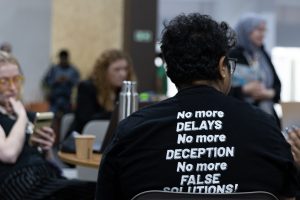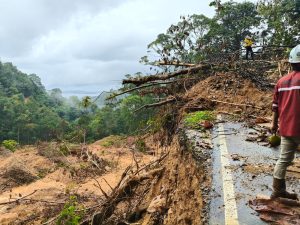Jakarta – Unicef’s latest report, the Climate Landscape Analysis for Children (CLAC), ranks Indonesia 46th out of 163 countries in the level of vulnerability to the impacts of climate change, especially for children.
The report prepared by the Ministry of Environment and Forestry (MoEF) and Unicef also shows that various climate change-related disruptions, such as extreme weather events, droughts, floods, rising temperatures and sea levels, have become more frequent. These disruptions directly impact crucial social services for children, including education, health, and access to clean water and sanitation.
“We face a huge challenge with these increasingly frequent climate disruptions, which directly hinder children’s access to essential services and even lead to malnutrition,” said Laksmi Dhewanthi, Director General of Climate Change Control at the Ministry of Environment and Forestry, when discussing the CLAC report, Tuesday, August 13.
In addition, the report revealed that climate change could reduce Indonesia’s Gross Domestic Product (GDP) by up to 3.45 per cent by 2050, with the impact felt most by the poor. Other data from the report shows that around 28 million children in Indonesia are exposed to tidal flooding, while another 15 million are exposed to heat waves. Air pollution is also a serious threat to most children in the country.
Laksmi added that the CLAC report could be an important guide for stakeholders in formulating strategic measures to protect children from the impacts of climate change.
“This report is expected to improve child-focused social sector policies, strategies and development plans in facing climate challenges,” she said.
To strengthen this protection effort, the government has included child protection issues in the Enhanced Nationally Determined Contribution (ENDC), as part of the commitment to gender equality in climate change control. MoEF also developed the Vulnerability Index Data Information System (Sidik) to assess climate vulnerability and risk at the village level across Indonesia. An Adiwiyata school program is also in place to increase the resilience of the younger generation in the face of climate change impacts.
However, while some initiatives have been undertaken, much work still needs to be done to better protect children. The CLAC report proposes six key strategies, including the integration of children’s rights in climate policies and programs, increased collaboration between governments, civil society, and the private sector, and the development of knowledge on the impacts of climate change on children.
Other suggested strategies include climate change education for children, engaging them in climate action, and improving early warning systems and climate data collection. All parties must work together to ensure that future generations are protected from the increasingly real threat of climate change. (Hartatik)
Banner photo: Children playing street football in Egypt. Mohamed Hozyen Ahmed/wikimedia commons















